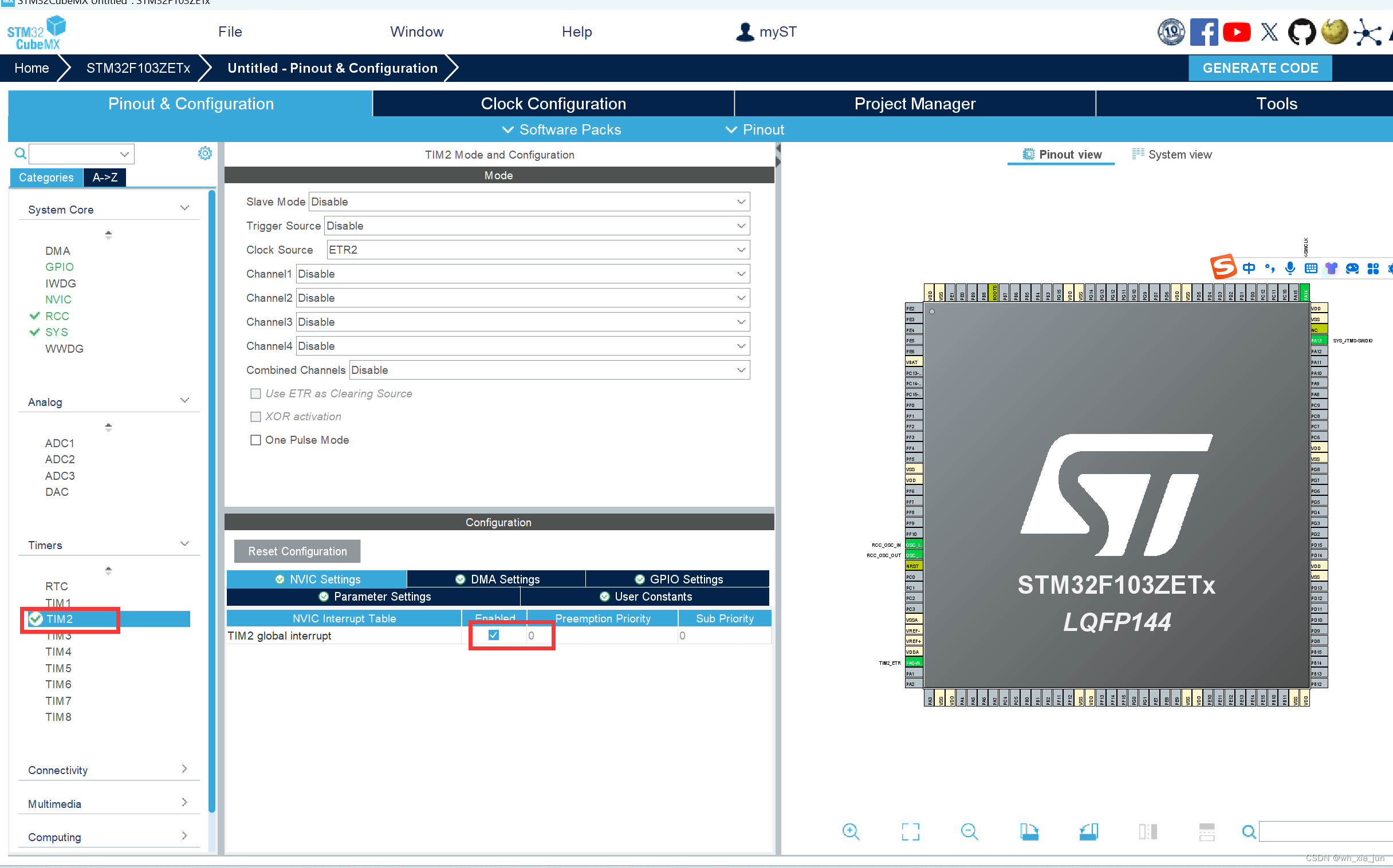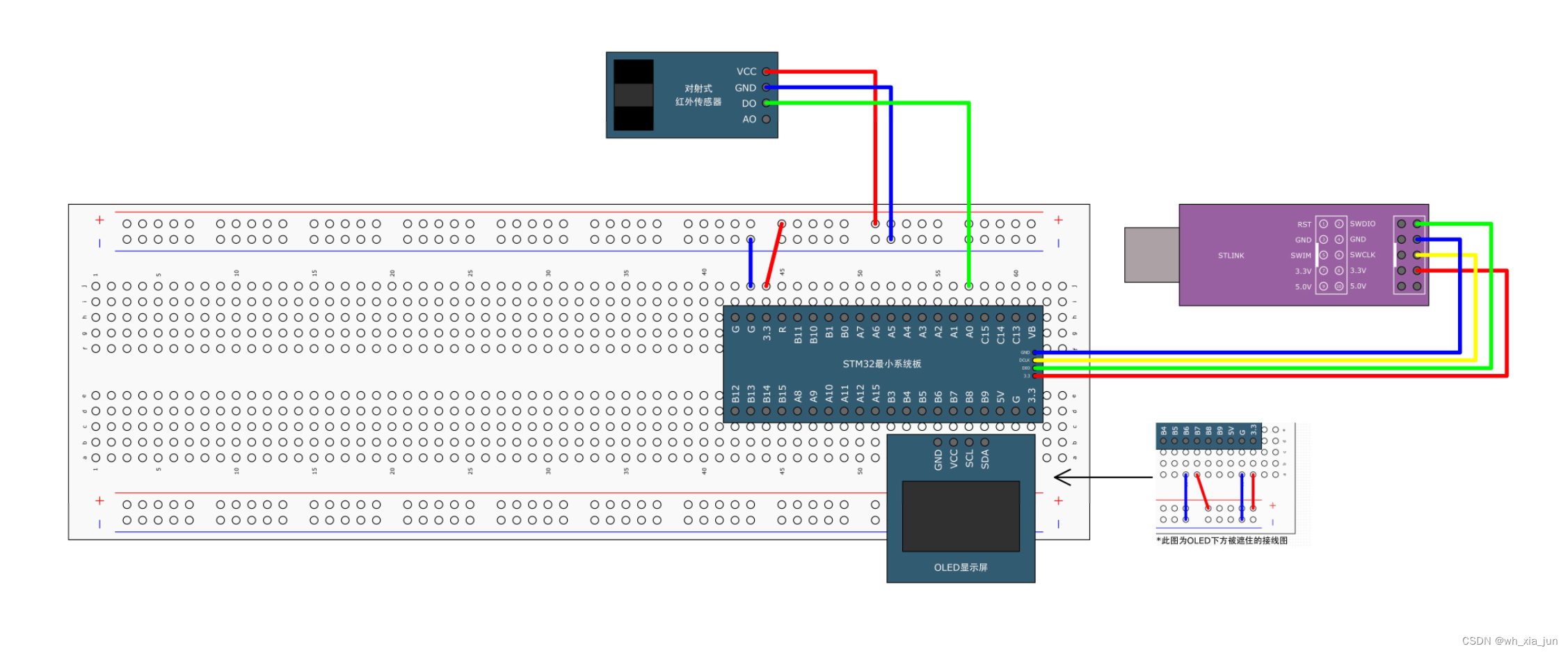
?實驗目的:
熟悉外部時鐘的應用。
實驗步驟:
- 創建項目
- 參照前面的文章,集成oled(沒有oled,用uart串口傳遞也可以)
- 選擇外部時鐘源
- 時鐘源參數設置
- 編寫代碼:
? 5.1聲明全局變量,如果發生定時器中斷的時候,在回調函數中修改這個變量
?5.2while循環中獲取定時器的值,通過串口傳給pc 或者在oled上顯示
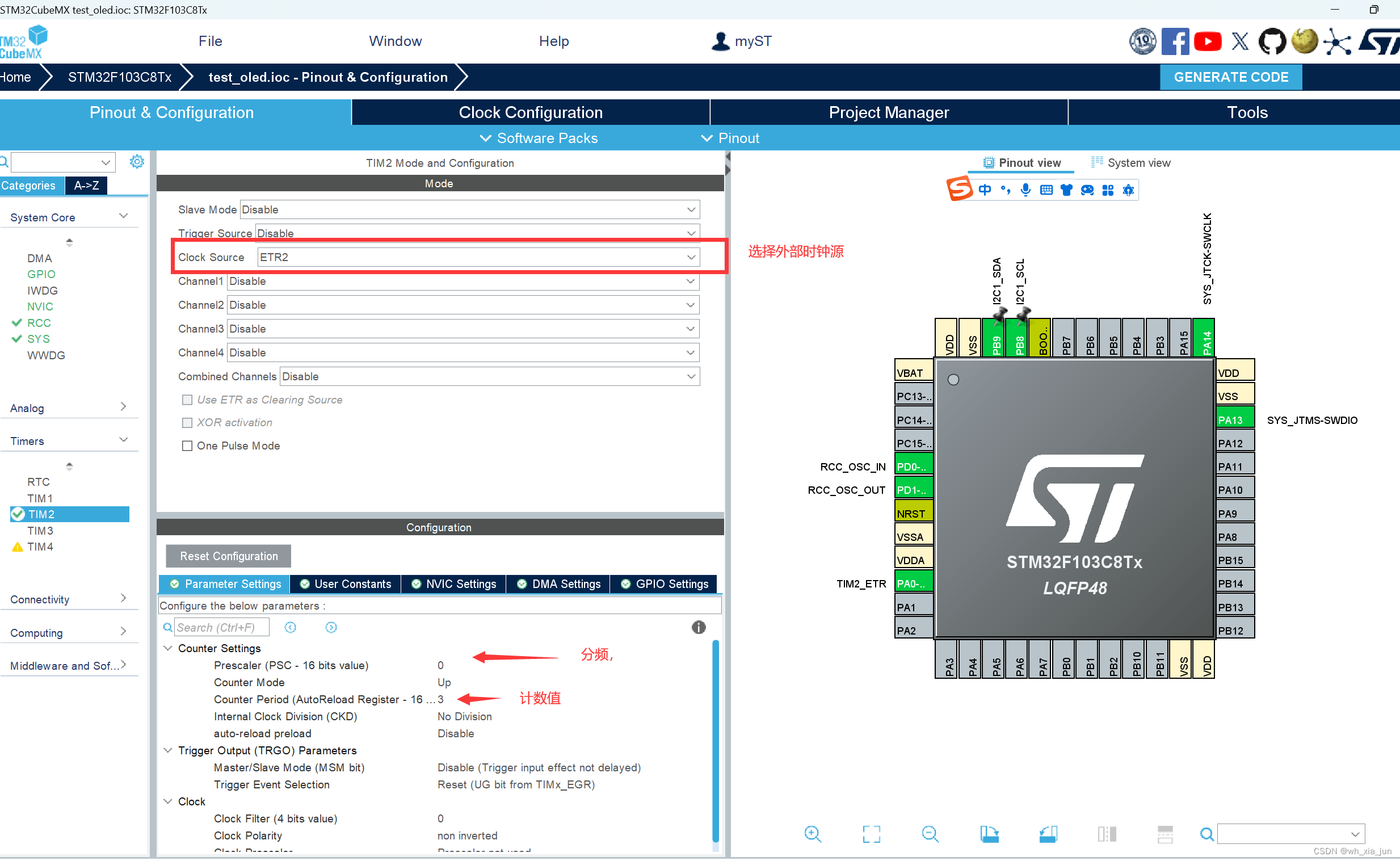
開啟定時中斷:
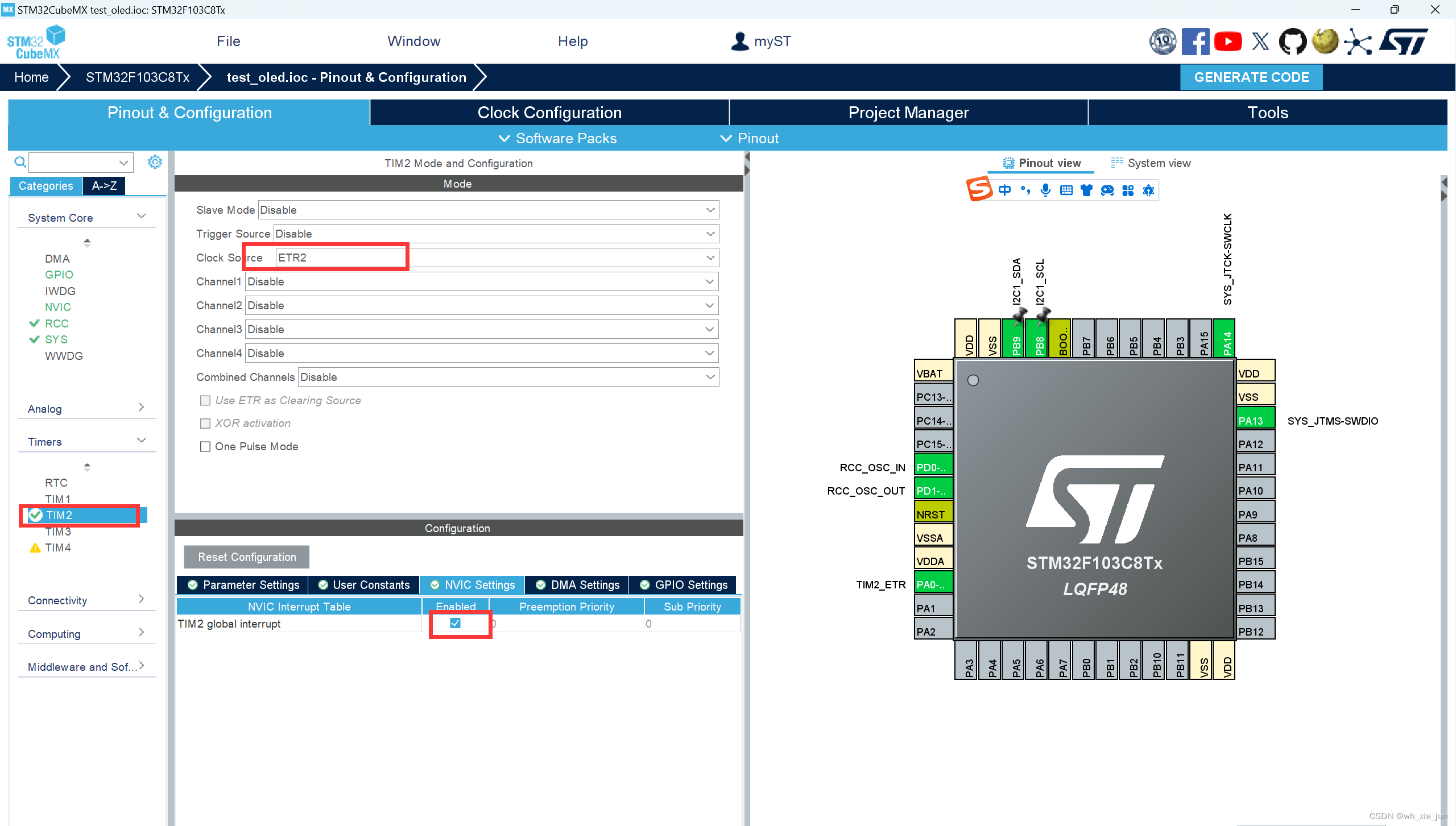
代碼部分:
首先定義一個全局變量:

開啟定時器:?

取得計數器的值,顯示數據:?
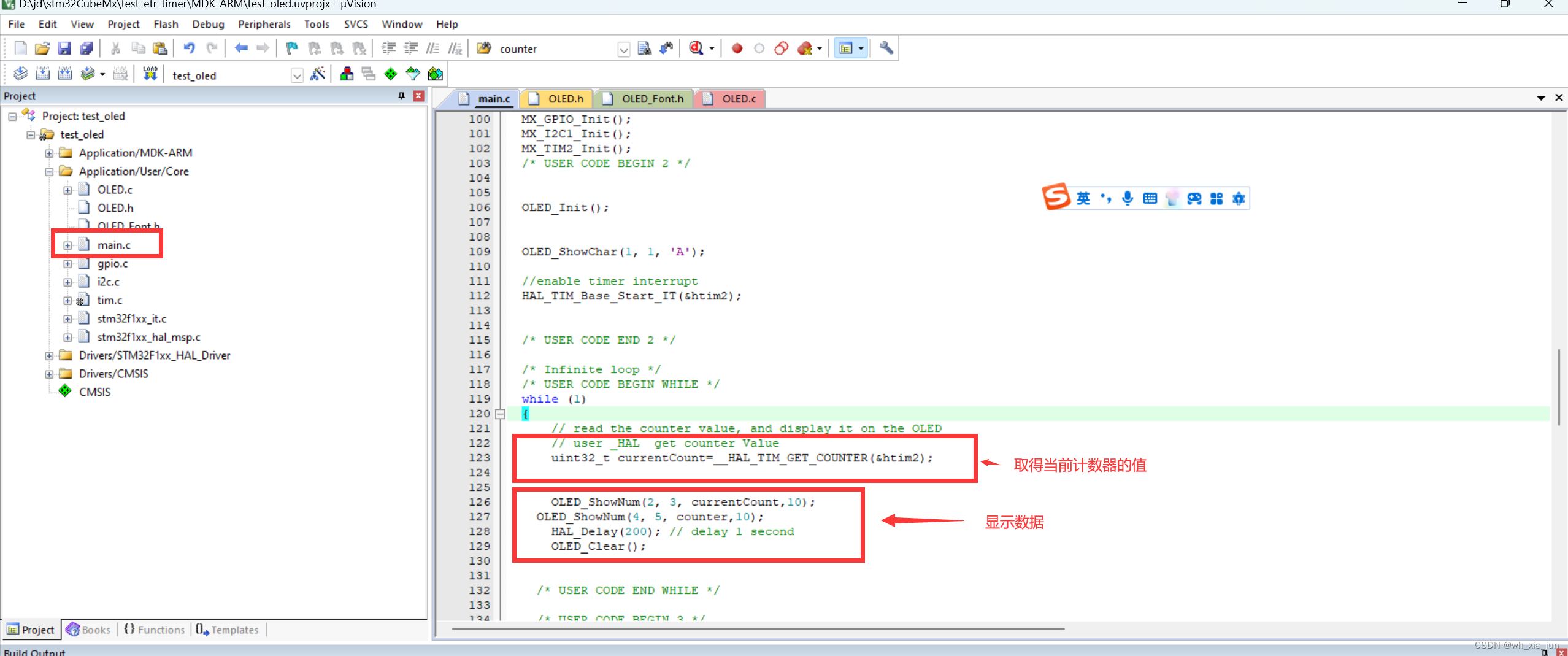
寫定時中斷代碼:
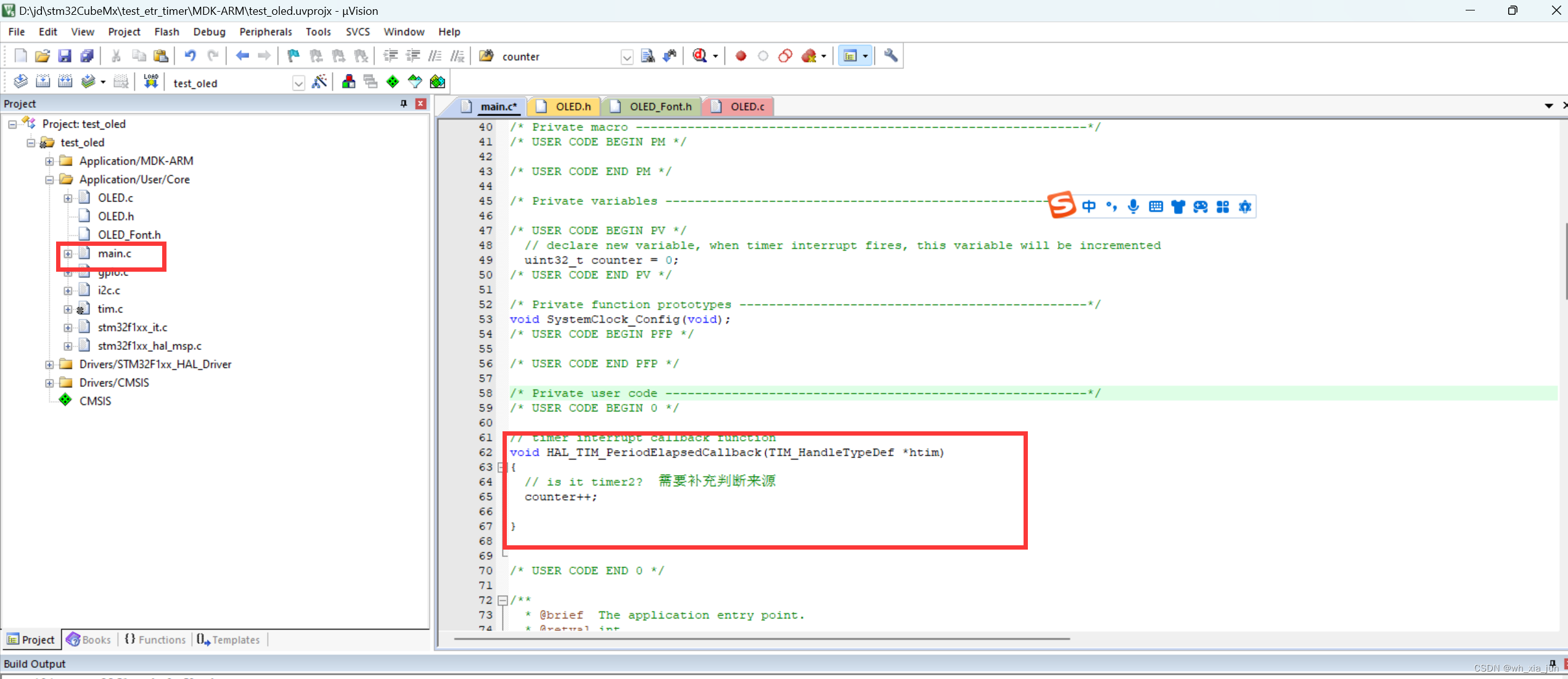
完整代碼如下:
/* USER CODE BEGIN Header */
/********************************************************************************* @file : main.c* @brief : Main program body******************************************************************************* @attention** Copyright (c) 2024 STMicroelectronics.* All rights reserved.** This software is licensed under terms that can be found in the LICENSE file* in the root directory of this software component.* If no LICENSE file comes with this software, it is provided AS-IS.********************************************************************************/
/* USER CODE END Header */
/* Includes ------------------------------------------------------------------*/
#include "main.h"
#include "i2c.h"
#include "tim.h"
#include "gpio.h"/* Private includes ----------------------------------------------------------*/
/* USER CODE BEGIN Includes */
#include "OLED.h"
/* USER CODE END Includes *//* Private typedef -----------------------------------------------------------*/
/* USER CODE BEGIN PTD *//* USER CODE END PTD *//* Private define ------------------------------------------------------------*/
/* USER CODE BEGIN PD *//* USER CODE END PD *//* Private macro -------------------------------------------------------------*/
/* USER CODE BEGIN PM *//* USER CODE END PM *//* Private variables ---------------------------------------------------------*//* USER CODE BEGIN PV */// declare new variable, when timer interrupt fires, this variable will be incrementeduint32_t counter = 0;
/* USER CODE END PV *//* Private function prototypes -----------------------------------------------*/
void SystemClock_Config(void);
/* USER CODE BEGIN PFP *//* USER CODE END PFP *//* Private user code ---------------------------------------------------------*/
/* USER CODE BEGIN 0 */// timer interrupt callback function
void HAL_TIM_PeriodElapsedCallback(TIM_HandleTypeDef *htim)
{// is it timer2?counter++;}/* USER CODE END 0 *//*** @brief The application entry point.* @retval int*/
int main(void)
{/* USER CODE BEGIN 1 *//* USER CODE END 1 *//* MCU Configuration--------------------------------------------------------*//* Reset of all peripherals, Initializes the Flash interface and the Systick. */HAL_Init();/* USER CODE BEGIN Init *//* USER CODE END Init *//* Configure the system clock */SystemClock_Config();/* USER CODE BEGIN SysInit *//* USER CODE END SysInit *//* Initialize all configured peripherals */MX_GPIO_Init();MX_I2C1_Init();MX_TIM2_Init();/* USER CODE BEGIN 2 */OLED_Init(); OLED_ShowChar(1, 1, 'A'); // clear timer2 flag__HAL_TIM_CLEAR_FLAG(&htim2, TIM_FLAG_UPDATE);//enable timer interruptHAL_TIM_Base_Start_IT(&htim2);/* USER CODE END 2 *//* Infinite loop *//* USER CODE BEGIN WHILE */while (1){// read the counter value, and display it on the OLED// user _HAL get counter Valueuint32_t currentCount=__HAL_TIM_GET_COUNTER(&htim2);OLED_ShowNum(2, 3, currentCount,10);OLED_ShowNum(4, 5, counter,10);HAL_Delay(200); // delay 1 secondOLED_Clear();/* USER CODE END WHILE *//* USER CODE BEGIN 3 */}/* USER CODE END 3 */
}/*** @brief System Clock Configuration* @retval None*/
void SystemClock_Config(void)
{RCC_OscInitTypeDef RCC_OscInitStruct = {0};RCC_ClkInitTypeDef RCC_ClkInitStruct = {0};/** Initializes the RCC Oscillators according to the specified parameters* in the RCC_OscInitTypeDef structure.*/RCC_OscInitStruct.OscillatorType = RCC_OSCILLATORTYPE_HSE;RCC_OscInitStruct.HSEState = RCC_HSE_ON;RCC_OscInitStruct.HSEPredivValue = RCC_HSE_PREDIV_DIV1;RCC_OscInitStruct.HSIState = RCC_HSI_ON;RCC_OscInitStruct.PLL.PLLState = RCC_PLL_ON;RCC_OscInitStruct.PLL.PLLSource = RCC_PLLSOURCE_HSE;RCC_OscInitStruct.PLL.PLLMUL = RCC_PLL_MUL9;if (HAL_RCC_OscConfig(&RCC_OscInitStruct) != HAL_OK){Error_Handler();}/** Initializes the CPU, AHB and APB buses clocks*/RCC_ClkInitStruct.ClockType = RCC_CLOCKTYPE_HCLK|RCC_CLOCKTYPE_SYSCLK|RCC_CLOCKTYPE_PCLK1|RCC_CLOCKTYPE_PCLK2;RCC_ClkInitStruct.SYSCLKSource = RCC_SYSCLKSOURCE_PLLCLK;RCC_ClkInitStruct.AHBCLKDivider = RCC_SYSCLK_DIV1;RCC_ClkInitStruct.APB1CLKDivider = RCC_HCLK_DIV2;RCC_ClkInitStruct.APB2CLKDivider = RCC_HCLK_DIV1;if (HAL_RCC_ClockConfig(&RCC_ClkInitStruct, FLASH_LATENCY_2) != HAL_OK){Error_Handler();}
}/* USER CODE BEGIN 4 *//* USER CODE END 4 *//*** @brief This function is executed in case of error occurrence.* @retval None*/
void Error_Handler(void)
{/* USER CODE BEGIN Error_Handler_Debug *//* User can add his own implementation to report the HAL error return state */__disable_irq();while (1){}/* USER CODE END Error_Handler_Debug */
}#ifdef USE_FULL_ASSERT
/*** @brief Reports the name of the source file and the source line number* where the assert_param error has occurred.* @param file: pointer to the source file name* @param line: assert_param error line source number* @retval None*/
void assert_failed(uint8_t *file, uint32_t line)
{/* USER CODE BEGIN 6 *//* User can add his own implementation to report the file name and line number,ex: printf("Wrong parameters value: file %s on line %d\r\n", file, line) *//* USER CODE END 6 */
}
#endif /* USE_FULL_ASSERT */
ps:外部時鐘示意圖:
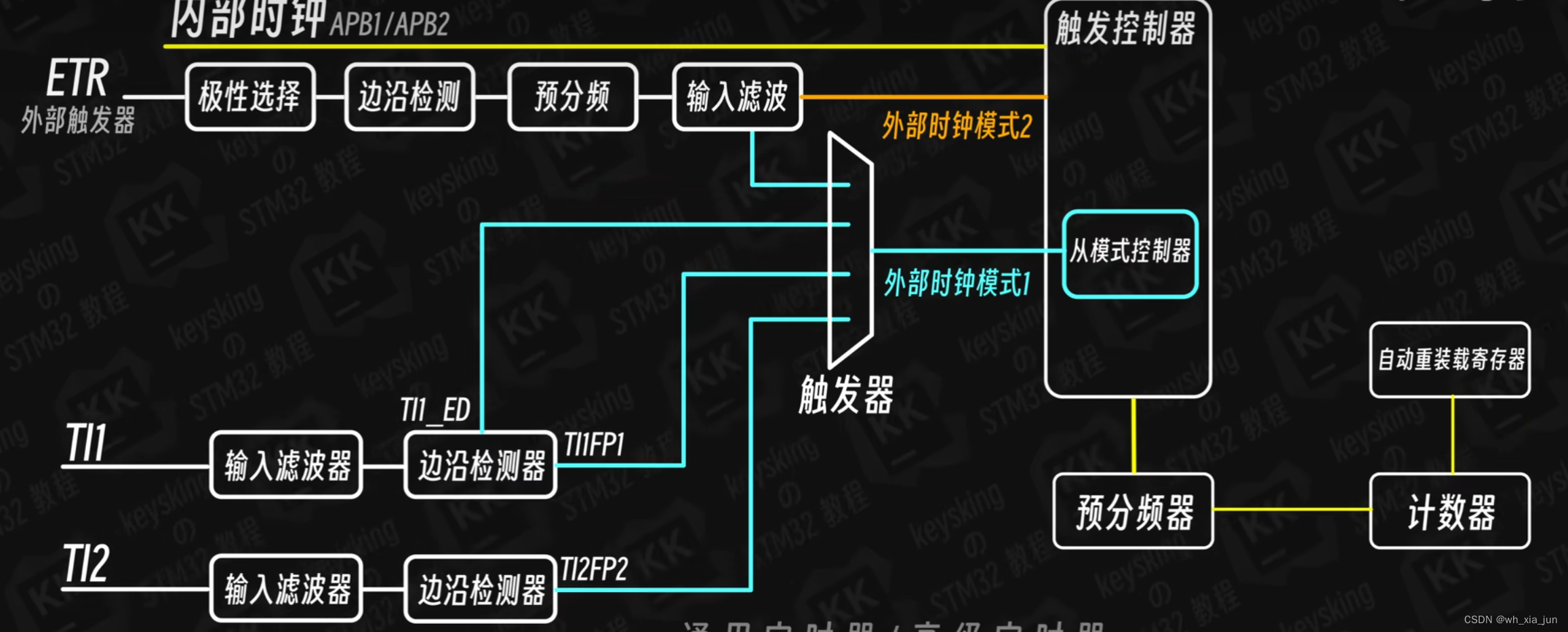
補充說明:
? timer2的clock選擇項,取默認即可,它們的意思是什么?
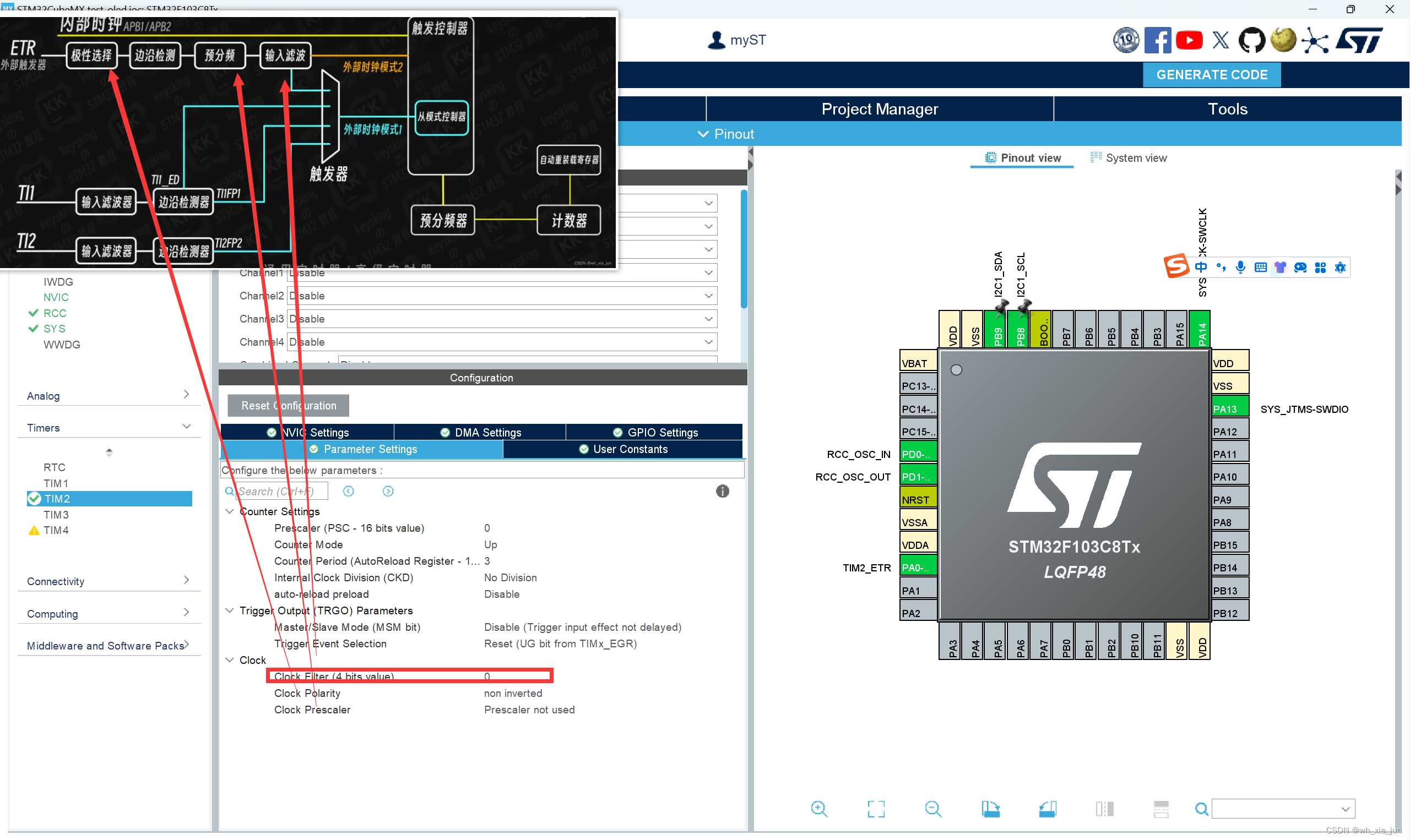
初始值的矯正:
由于內部影子寄存器啟動時中斷的影響,系統啟動后,沒有外部中斷信號,開始值是有1,這里做個小修正,啟動定時器前,清除一下標志位:
? __HAL_TIM_CLEAR_FLAG(&htim2, TIM_FLAG_UPDATE);
正點原子精英板上的應用:
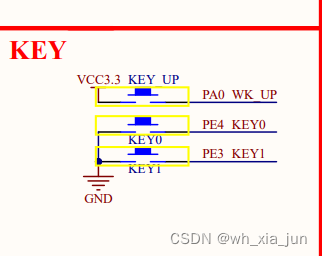
正點原子精英板上,PA0引腳上是按鍵,可以當成外部時鐘信號,即按一次相當于一個脈沖信息進入,顯示上,通過串口發送到pc端串口助手即可。

